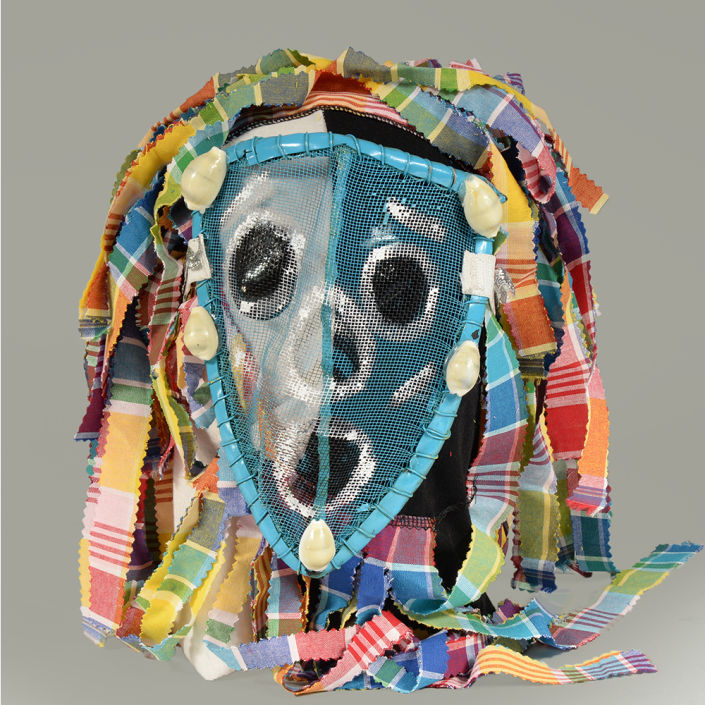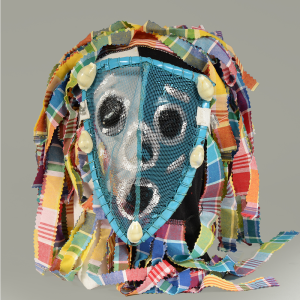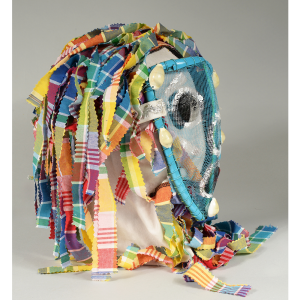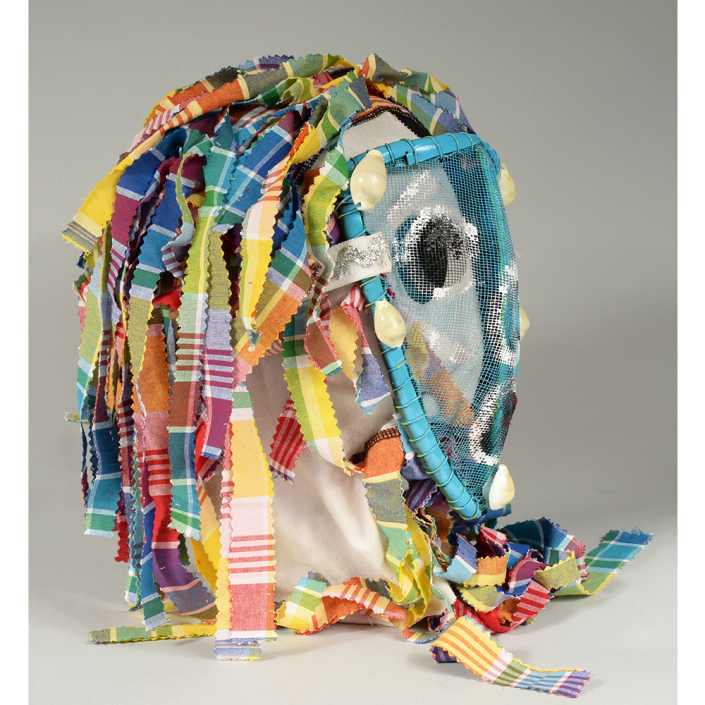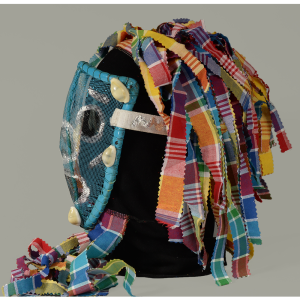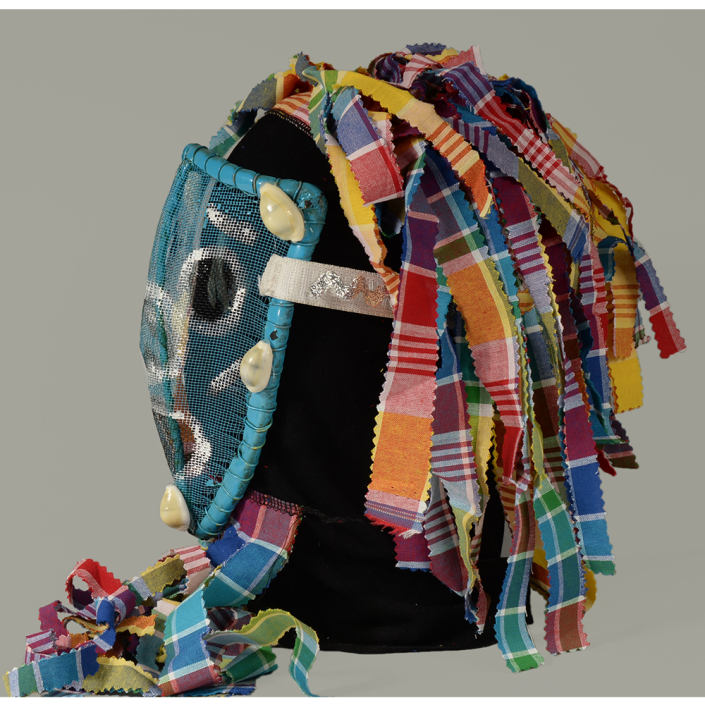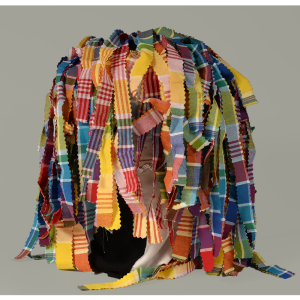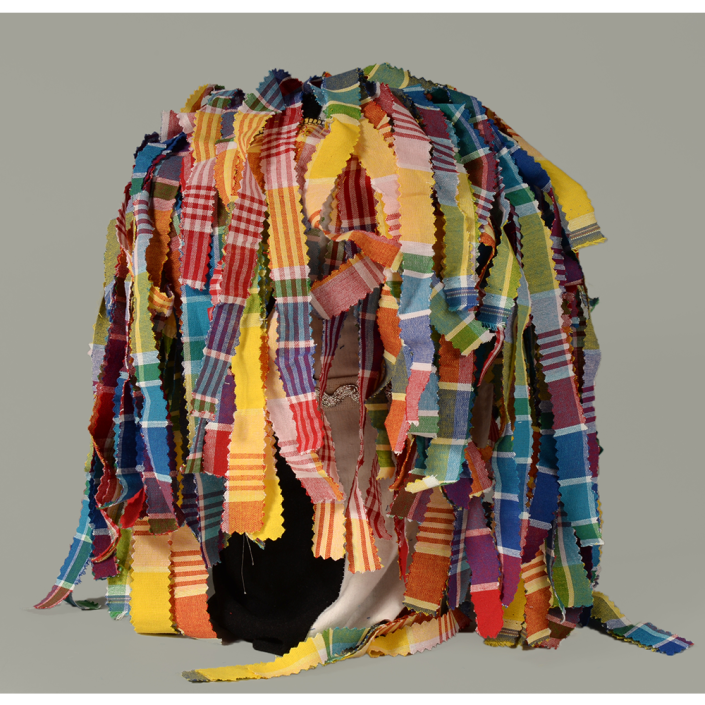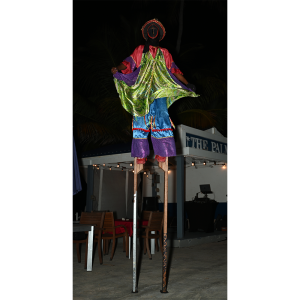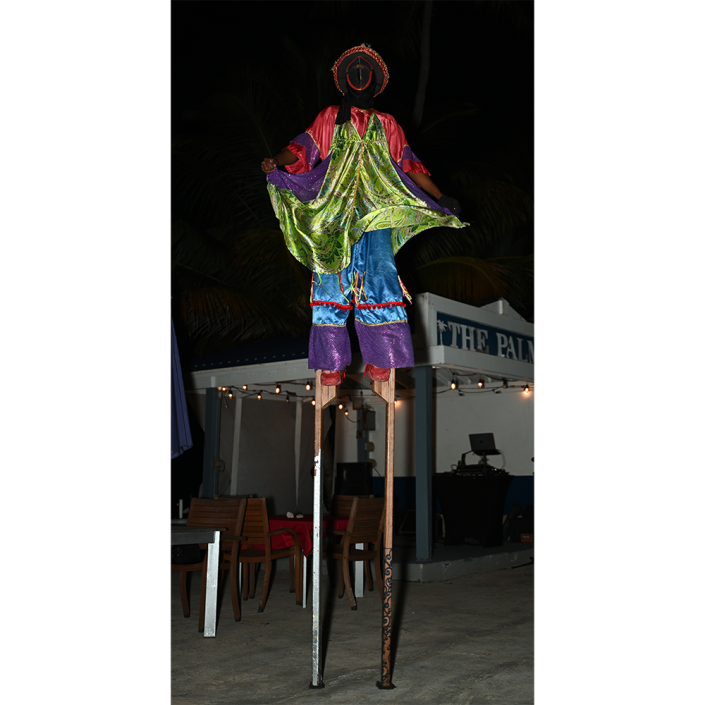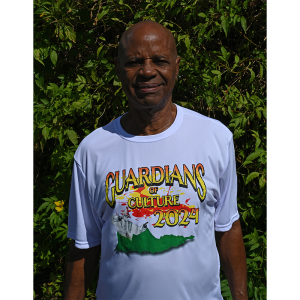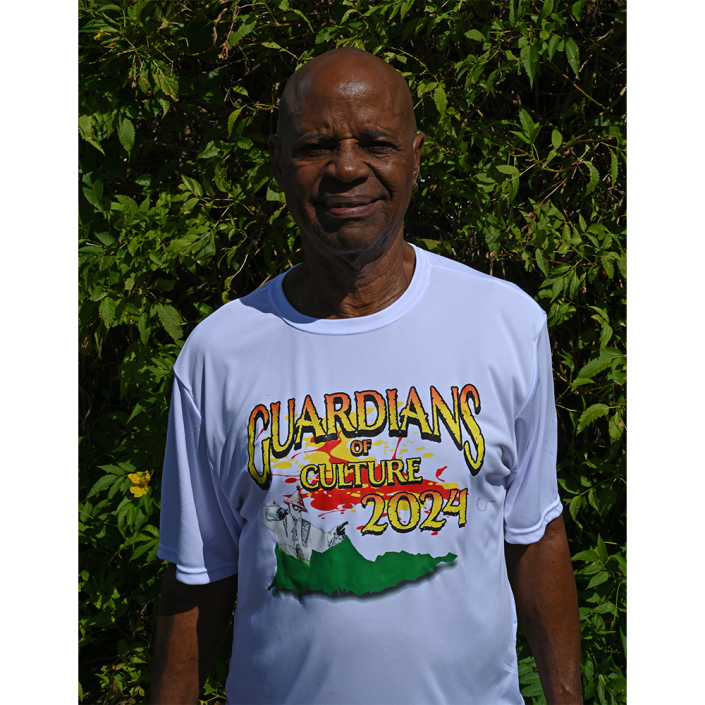TITLE: Moko Jumby Mask
TYPE: hood mask
GENERAL REGION: Caribbean
COUNTRY: United States of America
SUBREGION: U.S. Virgin Islands
ETHNICITY: African American
DESCRIPTION: Traditional Moko Jumbies Hood and Face Mask
CATALOG ID: NAUV001
MAKER: Willard John (St. Thomas, U.S. Virgin Islands, 1951- )
CEREMONY: New Years/Carnival
AGE: 2020
MAIN MATERIAL: dyed cotton cloth; metal wire mesh
OTHER MATERIALS: stitching; leather; metal wire; metal strips; cowrie shells; elastic bands; paint; adhesive
The “Carnival” of the U.S. Virgin Islands actually occurs the week after New Year’s Day and lasts for several days. On the island of St. Croix, the Carnival formally lasts three days. The first day is J’ouvert, meaning “I open,” and essentially consists of a large street party. The second day is a children’s parade followed by a music festival, and the last day is an adult parade, followed by fireworks. The parades include celebrants of many types, the most unique of which are the Moko Jumbies, or masked stilt dancers. Moko Jumbies are danced throughout the eastern Caribbean islands, and represent the lineage of masked stilt-dancing traditions brought to the Caribbean by slaves from northwest Africa. The African mukudji wear wood masks and costumes made from cloth and raffia fiber, dancing energetically and acrobatically to drums for the purposes of adult initiation and protection of the village. The best known mukudji are the Baule and Dan people of Côte d’Ivoire. Modern Moko Jumbies dance to Caribbean music purely for entertainment, but the ancestral significance of the practice is never far from the dancer’s mind. Today, cloth masks are much more common than traditional wire mesh masks, which somewhat inhibit vision.
For more on the Moko Jumbies, see Robert Wyndham Nicholls, The Jumbies’ Playing Ground (Univ. Press of Mississippi, 2012).
Click above to watch a short documentary film about the Moko Jumbies of the U.S. Virgin Islands.
